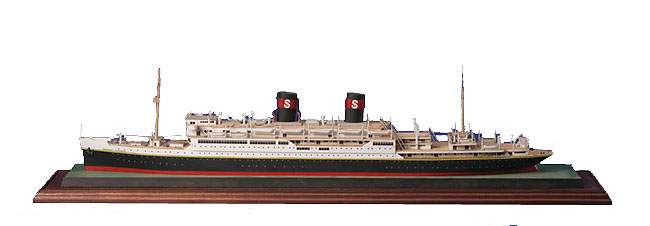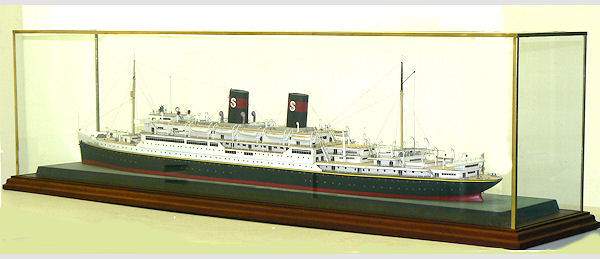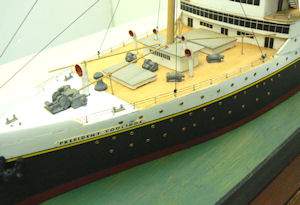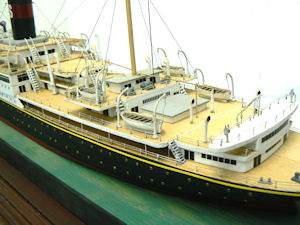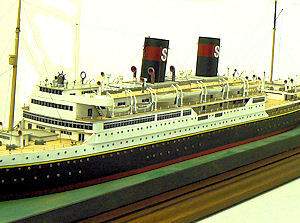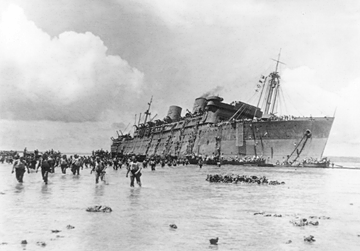 WW II: In 1941, as war time activities increased, the US War Department began to use the President Coolidge
WW II: In 1941, as war time activities increased, the US War Department began to use the President Coolidge
for occasional voyages to Honolulu and Manila. She also helped evacuate Americans from Hong Kong when Japanese-British relations
became strained in 1940. She was later called upon to assist in the evacuations of many people from Asia as the Japanese increased
aggression. In June 1941, the Coolidge went into service with the American Army as a transport ship for reinforcing garrisons
in the Pacific. A few months later the Japanese attacked Pearl Harbor on December 7, 1941. After this, the Coolidge was stripped
of her finery, painted haze gray, mounted with guns and turned into a troop ship. Many of the fixtures and fittings were removed
or boarded up for protection. After full conversion in 1942, she could carry over 5,000 troops. As a troop carrier, she was
never intended to see any action.
A large military base and harbor had been established on Espiritu Santo and the harbor was heavily protected by mines.
Information about safe entry into the harbor had been accidentally omitted from the Coolidge’s sailing orders, and upon her
approach to Santo on October 26, 1942, the SS Coolidge, fearing Japanese submarines and unaware of the mine fields, attempted
to enter the harbor through the largest and most obvious channel. A friendly mine struck the ship at the engine room and moments
later, a second mine hit her near the stern.
Captain Henry Nelson, knowing that he was going to lose the ship, ran her aground and ordered troops to abandon ship. Not
believing the ship would sink, troops were told to leave all of their belongings behind under the impression that they would
conduct salvage operations over the next few days.
Over the course of the next 90 minutes, 5,340 men got safely off of the wreck and to shore. There was no panic as the troops
disembarked – many even walked to shore. However, the captain’s attempts to beach the ship were unsuccessful due to the coral
reef. The Coolidge listed heavily on her side, sank, and slid down the slope into the channel. She now rests on her port side
with her bow at a depth of 70 ft and her stern at 240 ft.
There were 2 casualties in the sinking of the Coolidge: The first was Fireman Robert Reid, who was working in the
engine room and was killed by the initial mine blast. The second, Captain Elwood J. Euart, US Army Field Artillery, had safely
gotten off the Coolidge when he learned that there were still men in the infirmary who could not get out. He went back in
to one of the sea doors, successfully rescued the men but was then unable to escape himself and he went down with the ship.
A memorial to Captain Euart is located on the shore near the access points for the Coolidge.

WW II: In 1941, as war time activities increased, the US War Department began to use the President Coolidge
